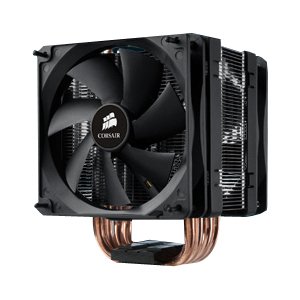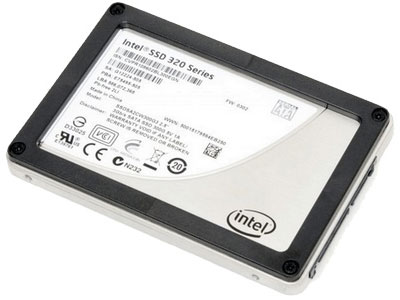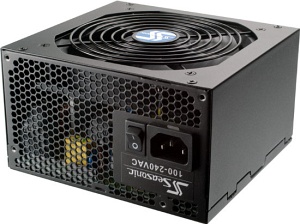Holiday 2011 Midrange System Buyer's Guide
by Zach Throckmorton on December 6, 2011 12:00 AM EST- Posted in
- Guides
- AMD
- Intel
- Sandy Bridge
- Llano
- Holiday 2011
- midrange
- NVIDIA
The King of Mainstream Processors
Intel's Core i7-2600K is actually not the king of mainstream processors—that honor is reserved for the more recently released Core i7-2700K. The only differences between the two chips are a 100MHz clockspeed advantage for the 2700K that carries a roughly $50 premium. That is, compared to the 2600K, the 2700K offers around 3% more performance at a cost increase of about 15%. Further, the 2700K does not reliably overclock substantially better than the 2600K. Thus, I consider spending the extra money on a 2700K unwise.
The Core i7-2600K's primary competitor is the Core i5-2500K. Compared the 2500K, the 2600K offers a slight clockspeed increase, and more importantly, Hyper-Threading. The 2600K is about $100 more expensive, so it's important to understand what applications and usage scenarios actually benefit from Hyper-Threading. You can see from Bench how the two CPUs compare. The short story is that if you use a lot of multi-threaded applications (like many photo and video editing titles), do a lot of file compression and decompression, or use specialized professional applications (3D Studio Max or CAD/CAM programs), then the 2600K is a wise investment. The average computer user, most gamers included, are really better off with the 2500K.
Rounding out the build

While the Core i7-2600K's stock cooler is sufficient for achieving respectable overclocks, for this build we're pairing the CPU with Corsair's A70. The A70 is a dual-fan heatpipe design that performs very well at an attractive after rebate price (and I've never had any issues with Corsair rebates). That said, there are many other similar CPU coolers that cost about $30, such as Cooler Master's popular Hyper 212 Plus that I've recommended previously.
Like the Biostar Z68 board this guide pairs with the Core i5-2500K, the ASUS P8Z68-V LE is also one of my go-to motherboards, for folks who want a few more bells and whistles than what the Biostar board offers. I've had good to great experiences with this board, especially in terms of its overclocking ability. Thus far these boards have been rock solid stable in the builds I've deployed with them. For a daily workhorse PC, reliability should be a primary consideration in choosing components.

Reliability is why we're going with an Intel 320 Series 120GB SSD for this PC. This SSD is neither particularly inexpensive nor particularly fast (though it will still put any HDD to shame). Instead, Intel's 5 year SSD warranty is the best in the market, and in my experience, Intel's SSDs are very reliable. (Yes, we know the 320 Series had some teething problems, but those appear corrected with the latest firmware.) We've bumped the capacity of the SSD up compared to the previous two builds so that more work-related applications can be installed on it, including disk space hogs like Adobe's CS5.5. While this build also includes the Samsung F3 1TB, it is important to consider whether you need a 7200RPM mainstream HDD or if instead you might be able to use a slower, less expensive "green" drive like Western Digital's WD10EARS.
Because some applications devour RAM, and because RAM is extremely inexpensive right now, we've bumped the DDR3 count from 8GB to 16GB—at the low cost of $60 total. While we're specifically recommending two kits of 8GB (2 x 4GB) G.SKILL Ripjaws X DDR3-1600 because of their current low price, RAM prices fluctuate frequently and wildly, so it's a good idea to comparison shop between different brands for the most attractive combination of price and speed.

SeaSonic is another component company with a well-deserved reputation for reliability. The S12II 430B is not cheap for a 430W PSU; however, it is very high quality, comes with a 5-year warranty, and is more than enough power for this system. It's also capable of supporting many upgrades, including a powerful discrete GPU if you become interested in GPU-accelerated computing (or gaming) down the road.
Finally, Fractal Design's Define R3 has the honor of housing all of these capable components. The Define R3 was recently reviewed by Dustin, and again I concur with his conclusions. I think this case is as good as it gets at the $100 price point, though there are other cases that perform similarly in terms of objective measures like temperature and noise. I simply find working with Fractal Design's cases in general to be a pleasure and really like their aesthetics.
| Component | Product | Price | Rebate |
| CPU | Intel Core i7-2600K | $320 | |
| CPU cooler | Corsair A70 | $45 | -$15 |
| Motherboard | ASUS P8Z68-V LE | $133 | |
| RAM | 16GB G.SKILL Ripjaws X DDR3 1600 (4 x 4GB, 2 kits) | $60 | |
| SSD | Intel 320 Series 120GB | $200 | |
| HDD | Samsung F3 1TB | $150 | |
| Power supply | SeaSonic S12II 430B | $75 | |
| Case | Fractal Design Define R3 | $100 | |
| Optical drive | LITE-ON iHAS-324-98B | $20 | |
| Operating system | Microsoft Windows 7 Home Premium 64-bit (OEM) | $100 | |
| Total: | $1203 | $1188 |
Summary
This Intel Core i7-2600K system rings up about 20% more expensive than the Core i5-2500K rig on the previous page. You lose the ability to game as this PC has no discrete video card (and the integrated Intel graphics are not gaming-level). Instead, you gain a larger SSD, increased overclocking capability, twice the RAM, and an extra four threads courtesy of Hyper-Threading. To be clear, the i5-2500K is likely a better fit for most computer users than this i7-2600K rig. However, this system can easily be turned into a gaming rig in the future, mitigating one of its drawbacks. And most importantly, certain more intensive applications like many video encoding titles will see more than a 20% improvement in performance for a 20% cost increase. If you can hang off buying a GPU for the time being, as we noted earlier the next generation AMD parts are due "real soon now" so you can grab one of those after the holidays.
We have a few more words of advice and general conclusions on the next page.










57 Comments
View All Comments
Will Robinson - Tuesday, December 6, 2011 - link
I agree a good SSD makes a big difference to the feel and function of the rig.I recently installed a Patriot Wildfire SSD 120GB running Win 7 64-bit and it is impressive.
Great bang for the buck.
demonbug - Tuesday, December 6, 2011 - link
Definitely agree, my 64 GB SSD has made a world of difference. It provides plenty of space for OS and applications; games go on my spinning drive.It can be a pain to manage manually, though, as even if you tell Windows to put all your documents etc. on the HDD there are a lot of programs that will ignore this and automatically put things on your SSD (they seem to assume that your document folders are in the standard location and don't bother checking or asking where you want to put user data). This is probably where the Z68 method of using the SSD as a cache drive would be really nice (I put my system together about a year before Z68 came out), just to save you the trouble of managing things by hand when software companies are idiots (biggest issue I ran into was actually Amazon's downloader - not only does it prevent you from selecting a download location, once it downloads it also unpacks without asking you where to put it; when the program you are downloading is 10 GB [BF3], meaning you actually need 20 GB+ free on a 64 GB SSD, this is an issue).
stanwood - Tuesday, December 6, 2011 - link
Some of the geeks who read your site don't game. But we do use our computers for work. So I really appreciate the high-end "worker" build.One question. My current setup chokes in RAW image processing in Adobe Lightroom 3. Is HT in the 2600K likely to help here? (does LR3 make good use of multi-threading?)
Z Throckmorton - Tuesday, December 6, 2011 - link
Hi Stanwood - I do a bit of image processing in Lightroom 3, and when rendering previews, LR3 pegs all eight 'cores' of my i7-2600K. So it is worth considering springing the extra $100 on the 2600K vs the 2500K. If nothing else, you can always buy both chips, compare them, and then sell the chip you don't end up keeping. The 2500K and 2600K hold their values very well and you'd likely only end up losing out $20-30.LeftSide - Tuesday, December 6, 2011 - link
Stanwood, it would help to know what your current hardware is. My old system would stutter while editing, viewing, and processing raw images. It was a q6600 with 4gb of ram.My new system is a an 2500k with 8gb of ram, and it runs smooth. I think the ram was my biggest bottle neck, although I now edit my RAWs on a separate hard drive that has no programs installed on it. I can see how you could choke down a system if windows, lightroom, and the raw files are all on the same HD.
stanwood - Tuesday, December 6, 2011 - link
Thanks for the response Zach! I will go with the 2600K.LeftSide, currently I have no desktop system. Only a T61 notebook that I dock into a nice big Dell UltraSharp 2408WFP display. The Thinkpad runs Win7pro 64 on a C2D T9300 @ 2.5GHz with 4GB ram and an NVidia Quadro NVS 140M with 128MB . I run LR3 in 64-bit.
For most work this system has been great. And of course I can move easily to the couch. But once I started to take pictures in RAW and process them I noticed the limitations. It works (choke was really an exageration) but life is a bit slow. Also ripping DVDs to put onto my HDD for travel takes a while.
My work issued laptop is a newer T410 but has a comparable processor. And it can really slow down when I have lots of PPT and XLS files open, plus running Emacs, Exceed, Lotus Notes and Lotus Sametime. For work my system seems to be CPU and RAM limited.
So I'm thinking to build myself a more powerful desktop system and use it for work, photo processing, and ripping DVDs. A SB system on Z68 with HD3000 graphics seems like a good start. I can spend my money on CPU cores, RAM, and an SSD. And I get access to Quicksync. I don't game but I may later try out a retail dGPU and see it it helps. If not I'd return it.
I can always couch surf on my T61 and there's an excuse to start eyeing tablets . . .
Achilles97 - Tuesday, December 6, 2011 - link
Is it really worth spending $140 on a case in a $1000 build? That's 14%. What about a $60 Antec 300 Illusion?tsnorquist - Tuesday, December 6, 2011 - link
I'm with you. Get a cheaper case and invest in a video card.erple2 - Tuesday, December 6, 2011 - link
Normally, I'd agree with you. However, that $140 case will last you as long as you want it to, probably through several "builds". And that's where the niceness of the $140 case comes into play.If you plan on throwing everything out on the next "upgrade", then case prices don't really matter all that much. But I can tell you that I've enjoyed working on my Antec P182 case for the past 3 builds I've made for it. It's more than paid for its $140 price tag IMO.
Had I only made a single build, and trashed it for the next one, I'd agree with you. So, if you intend to reuse as much as you can for the "next" build (which, by the wording in the article seems to be "2016"), maybe that doesn't matter that much. But then again, saving 80 dollars over 7 years is only about 12 dollars per year. Is that worth it? Particularly if the cheaper cases are more difficult to live with? I dunno.
DanNeely - Tuesday, December 6, 2011 - link
Depends how often you upgrade your systems. Cases from 5 years ago often won't hold modern full length GFX cards, are generally lacking in PSU mounts with external intake, won't have behind the board cable management, and will have obsolete front panel connectors. I don't know what to expect over the next 5 years; but I do assume our current state of the art cases will be found lacking in multiple must have feeatures for a good enclosure.